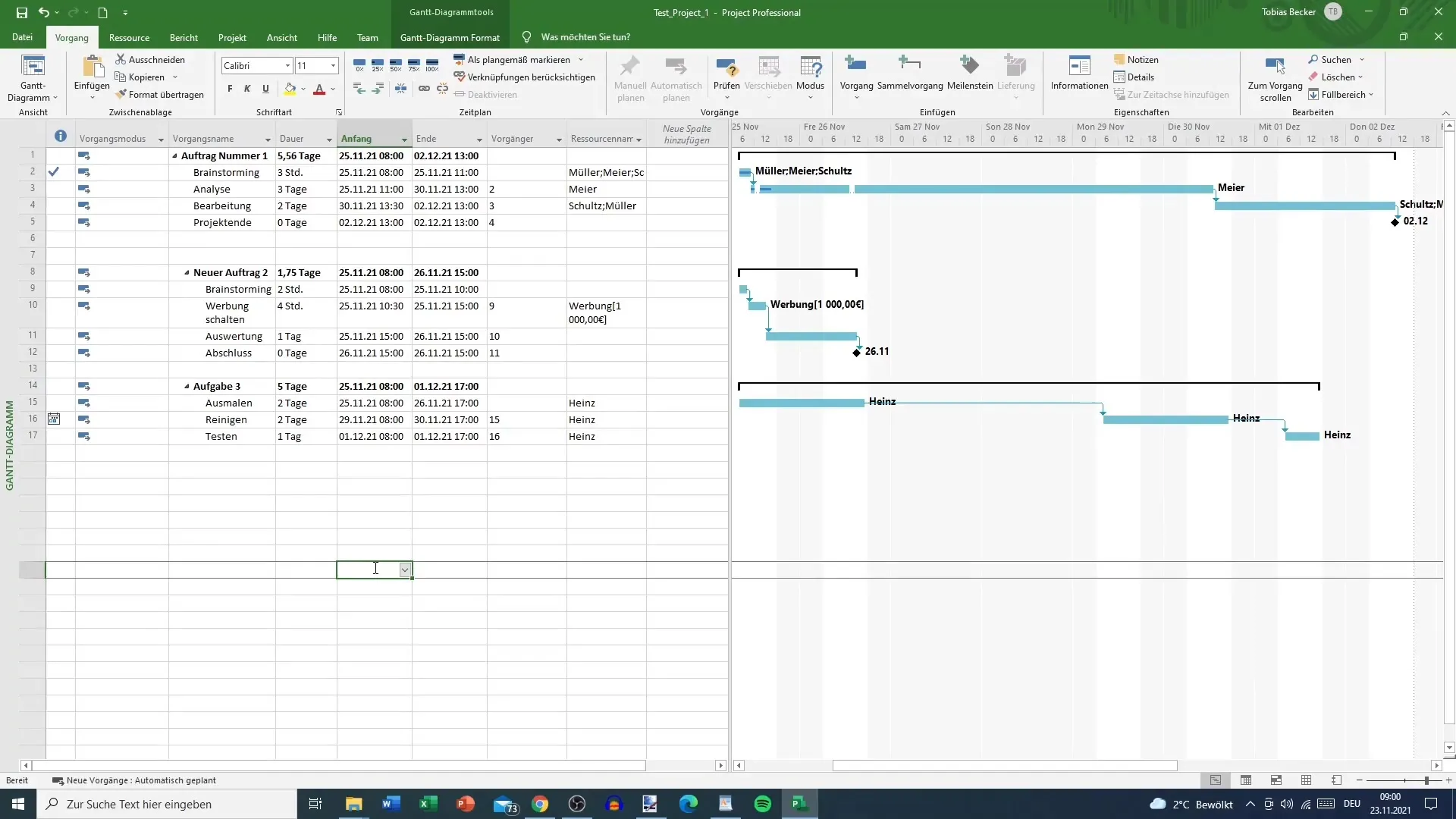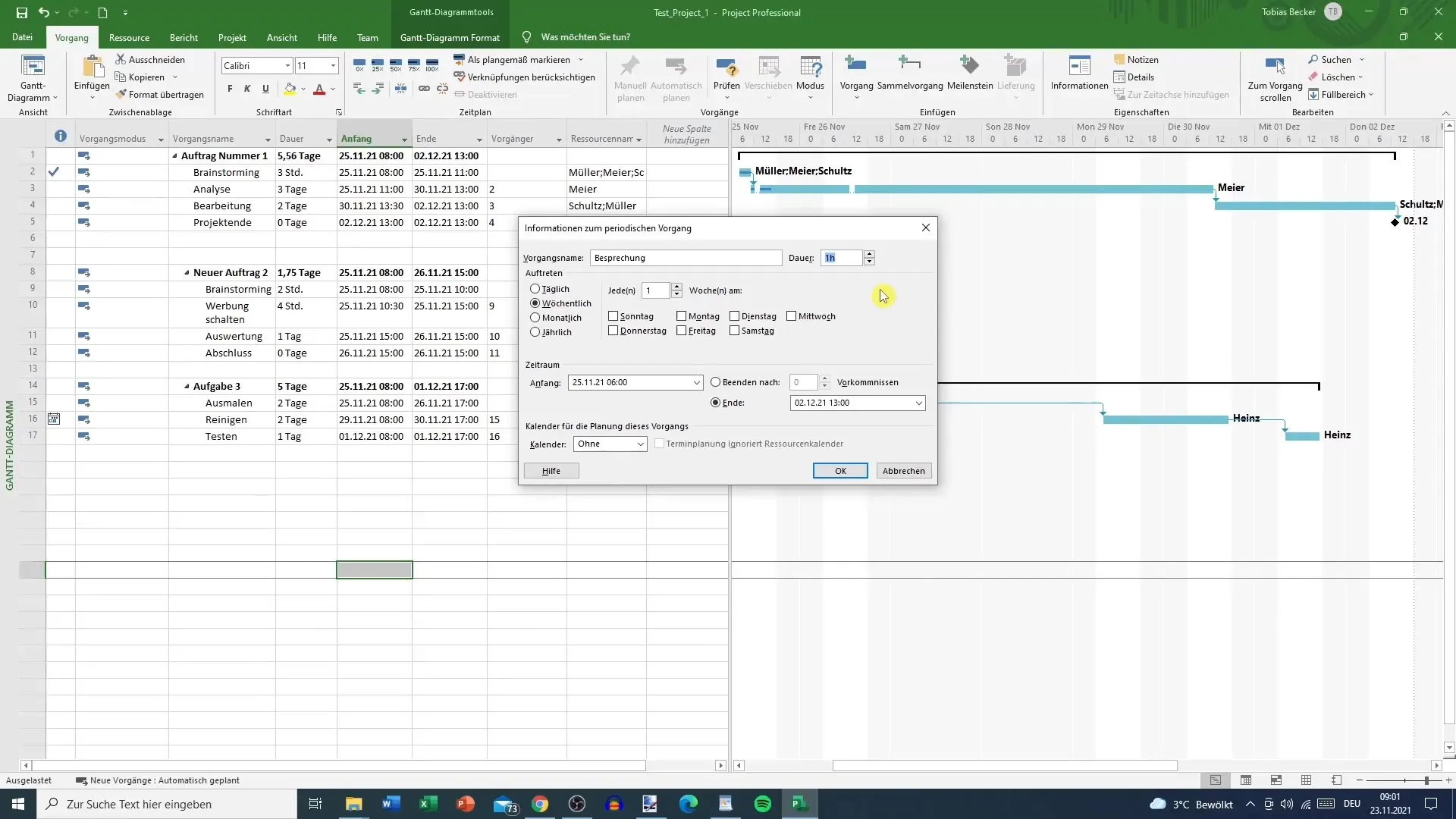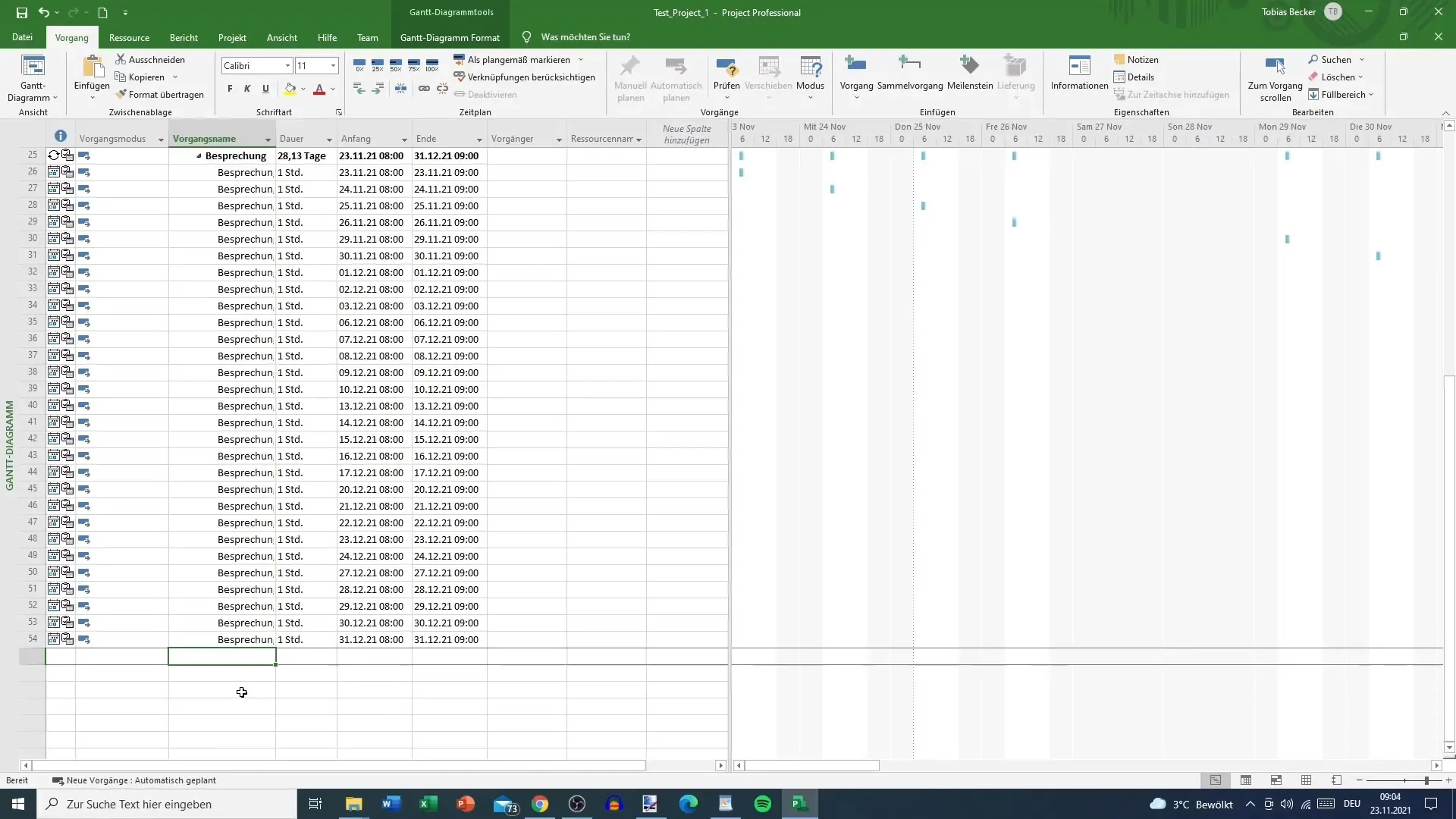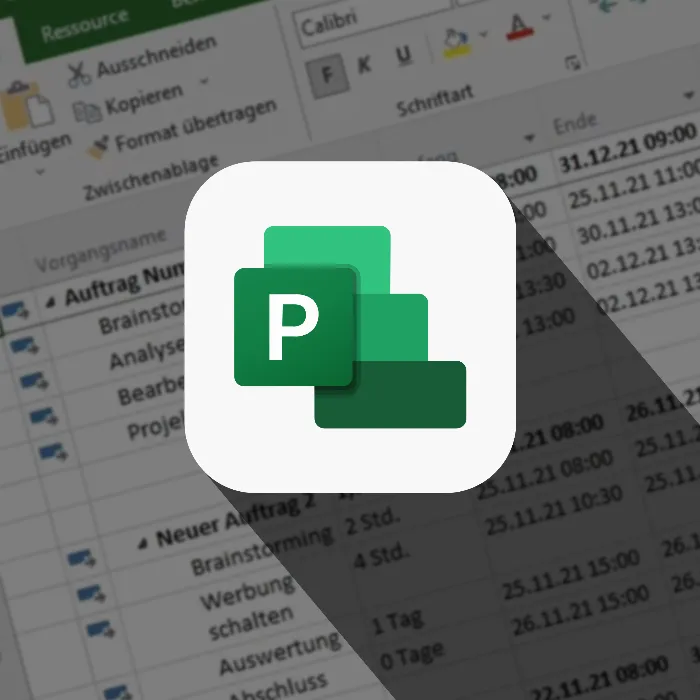Planning and managing projects often requires the inclusion of recurringtasksto maintain an efficient overview of regular activities. In this guide, you will learn how to create a recurring task in Microsoft Projectand what options are available to you.
Key Insights
- Recurring tasks can easily be inserted into MS Project.
- You can specify the frequency and duration of a recurring task precisely.
- It is possible to link recurring tasks with other tasks.
Step-by-step guide to creating a recurring task
To create a recurring task in MSProject, follow these steps:
First, open Microsoft Project and navigate to the "Task" tab. There you will find the "Insert" option, followed by "Tasks." In this area, you can create recurring tasks, which are referred to as periodic tasks. These are useful for tasks that occur at set intervals, such as regular meetings or discussions.

To create a recurring task, click on "Insert Task." You can now specify the details of the recurring task. Let's call the task "Meeting." Define the duration of the meeting, for example, to one hour. Here you have the flexibility to set the duration according to your needs – whether it is one hour, one day, or one minute.
In the next step, you need to specify the frequency of the meeting. Does the meeting occur daily, weekly, or monthly? You can adjust the frequency according to your wishes, whether daily, only on working days, weekly on specific days, or monthly on the first of the month.
Let’s assume the meeting occurs daily, but only on working days. Additionally, you can set a start and end date. For example, start today and set the end date to December 31. This way, you can see at a glance how many occurrences there are until the end of the period. In this case, that results in 29 recurring meetings. Alternatively, you could also state that the meeting should end after 10 occurrences, and the end date will adjust accordingly.

After you have provided the basic information, select the calendar – in this example, the standard calendar – and confirm your entries with "OK." It may be necessary to adjust the schedule a bit to ensure everything fits harmoniously into the timeline. You can collapse the view of the recurring tasks in the project structure to make it clearer.

We have now inserted the meeting as a recurring task. If you now want to add a new task, for example, "Work," you can schedule it directly after the meeting. Go to the new task and set the work duration to 6 hours. Here you can now see in the predecessor field the number for the meeting you just created.

It is also possible to link these new tasks with other tasks. This means that theoretically, you can create additional tasks aftereach meeting. For example, if you want to add another task called "Painting," which takes two hours and follows the meeting, you can simply enter the corresponding predecessor task.
With these steps, you can create a well-organized Gantt chart in Microsoft Project, which gives you a clear overview of your tasks and their chronological order.
Summary – Effectively Creating Recurring Tasks in MS Project
In this guide, you learned how to easily and effectively create recurring tasks in MS Project. You also explored the various options for customizing the frequency and structure of your tasks to optimally organize your project plan.
FAQ
How do I create a recurring task?Navigate to the "Task" tab, select "Insert," and then "Tasks."
Can I adjust the duration of a recurring task?Yes, you can choose the duration freely, e.g., from one minute to several days.
How often can a recurring task take place?You can schedule it daily, weekly, monthly, or annually.
Can I set the start and end date for recurring tasks?Yes, both the start and end dates can be set individually.
Can I link recurring tasks with other tasks?Yes, you can establish predecessor relationships between recurring tasks and other tasks.


